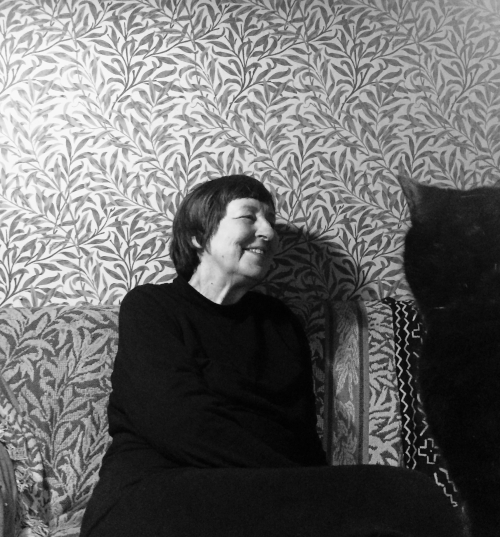One of the greatest visionaries in Finnish literature Leena Krohn answers HLA’s questions.
In this interview I would like to focus on books for children, or those that are labeled this way since your works are often described as literature that knows no age limits. How do you imagine your readers when you write and how do you see the difference between a children’s book and a book for adults?
I never imagine my readers. I imagine the characters and geography of my story. The first idea and the evolving story itself create the borders and the atmosphere. Whoever my readers are I always try to be like H.C. Andersen, one of my favourite writers: ”short, clear, rich”.
The books Green Revolution, Children of the Sun and many others have been beautifully illustrated by your sister Inari, who has made a long career as a visual artist. How did you create these books, did illustration follow text? Or have you worked with the ideas together? Can you tell a little bit about the process.
My text in Green Revolution followed all the way Inari’s illustration. In all my other illustrated books the text has been first. I never cut in my sister’s illustrations or the graphic designer Marjaana Virta’s work. She has been the designer of my books soon for 40 years. They are both extraordinary professional artists and they know their ideas best. I have always been very satisfied with the results.
In your recent books, The Broom (Luuta) and Bosom Friend (Sydänystävä), you have also done the illustrations. How has it been different?
They have been exciting exercises, not easy at all, which have given lessons to me to appreciate, even more than earlier, the work of real artists. I really enjoy playing with colors, with words I must often struggle.
In many of your stories strange things seem familiar, not unlike in Alice in Wonderland. There is an ambiguity whether it’s a dream that resembles reality or reality itself is dreamlike. How do you see this line between reality and fantasy?
When I was ten, I read the title of Pedro Calderón’s play Life Is a Dream. It felt so proper to me that I thought it as my favourite phrase. Later I have learned that in some schools of Buddhism reality is literally unreal. In my novel Datura, or A Figment Seen by Everyone and in many other works I have returned to these philosophical and spiritual themes. Our social reality is very limited, we have actually no possibility to know absolute reality.
In your stories, and in children’s literature in general, the most exciting things often happen to children. In New Opabinia a small girl finds a prehistoric creature no adult cared for. In The Pelican’s New Clothes pelican dresses like a human and lives just like anyone else. Grown-ups don’t notice anything, but children see right through the pelican’s disguise. What do you think it is that children see and grownups don’t?
Children have not yet learned all the conventional observation habits. Adults see what they know, children know what they see.
At least two of your children’s books address our lives in cities. The Green Revolution is an ecocritical story that tells about active citizenship. A group of children gather for a protest and save a park from being paved over. In Bosom Friend (Sydänystävä) a lady cannot keep a beetle as a pet, because the city prohibits it. What do you think are the most important questions about our life in cities?
Nature in cities must be preserved not only for birds and insects but for human health and peace of mind, too. There should be a lot of green roofs and trees on every street and square to create shadows, better climate and healthier atmosphere. I hate this sealing and closing ideology, which now is controlling city plans in Helsinki with dull and massive architecture.
In Bosom Friend you depict your hometown in a very sensitive and interesting way. What three of your favorite things would you recommend a visitor to do in Helsinki?
Nowadays Lovisa is my hometown. I recommend a visitor The University of Helsinki Botanical Garden, The National Library of Finland and The Market Square.
What are you currently reading?
Iida Turpeinen: Elolliset (Beasts of the Sea), Lyndall Gordon: The Imperfect Life of T. S. Eliot
Finally, a version of the famous Proust Questionnaire, used by the legendary French journalist Bernard Pivot at the end of every broadcast of his literary television talk show Apostrophes.
What is your favorite word?
vapaa (translated as “free”)
What is your least favorite word?
niinku (translated as “like”, used as a filler when you’re thinking of what to say next)
Who are your favorite writers?
H.C. Andersen, Albert Camus, Anton Tshehov, Edith Södergran
What sound or noise do you love?
children’s laugh
What sound or noise do you hate?
chain saw
What profession other than your own would you like to attempt?
gardener
If Heaven exists, what would you like to hear God say when you arrive at the Pearly Gates?
Finally!
Yoast SEO
Toggle panel: Yoast SEOOpen document settingsOpen publish panel
- Document
